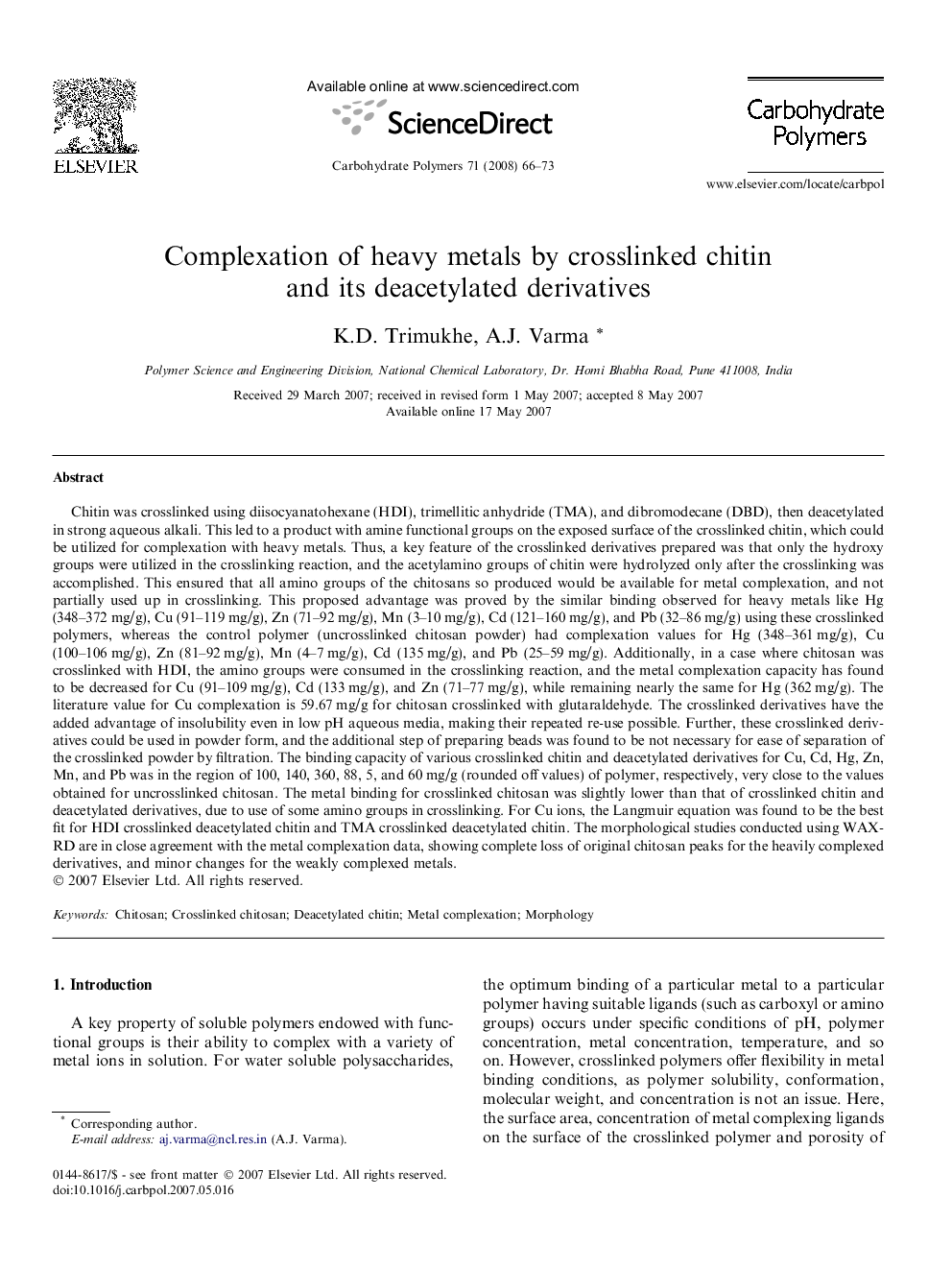| Article ID | Journal | Published Year | Pages | File Type |
|---|---|---|---|---|
| 1386564 | Carbohydrate Polymers | 2008 | 8 Pages |
Chitin was crosslinked using diisocyanatohexane (HDI), trimellitic anhydride (TMA), and dibromodecane (DBD), then deacetylated in strong aqueous alkali. This led to a product with amine functional groups on the exposed surface of the crosslinked chitin, which could be utilized for complexation with heavy metals. Thus, a key feature of the crosslinked derivatives prepared was that only the hydroxy groups were utilized in the crosslinking reaction, and the acetylamino groups of chitin were hydrolyzed only after the crosslinking was accomplished. This ensured that all amino groups of the chitosans so produced would be available for metal complexation, and not partially used up in crosslinking. This proposed advantage was proved by the similar binding observed for heavy metals like Hg (348–372 mg/g), Cu (91–119 mg/g), Zn (71–92 mg/g), Mn (3–10 mg/g), Cd (121–160 mg/g), and Pb (32–86 mg/g) using these crosslinked polymers, whereas the control polymer (uncrosslinked chitosan powder) had complexation values for Hg (348–361 mg/g), Cu (100–106 mg/g), Zn (81–92 mg/g), Mn (4–7 mg/g), Cd (135 mg/g), and Pb (25–59 mg/g). Additionally, in a case where chitosan was crosslinked with HDI, the amino groups were consumed in the crosslinking reaction, and the metal complexation capacity has found to be decreased for Cu (91–109 mg/g), Cd (133 mg/g), and Zn (71–77 mg/g), while remaining nearly the same for Hg (362 mg/g). The literature value for Cu complexation is 59.67 mg/g for chitosan crosslinked with glutaraldehyde. The crosslinked derivatives have the added advantage of insolubility even in low pH aqueous media, making their repeated re-use possible. Further, these crosslinked derivatives could be used in powder form, and the additional step of preparing beads was found to be not necessary for ease of separation of the crosslinked powder by filtration. The binding capacity of various crosslinked chitin and deacetylated derivatives for Cu, Cd, Hg, Zn, Mn, and Pb was in the region of 100, 140, 360, 88, 5, and 60 mg/g (rounded off values) of polymer, respectively, very close to the values obtained for uncrosslinked chitosan. The metal binding for crosslinked chitosan was slightly lower than that of crosslinked chitin and deacetylated derivatives, due to use of some amino groups in crosslinking. For Cu ions, the Langmuir equation was found to be the best fit for HDI crosslinked deacetylated chitin and TMA crosslinked deacetylated chitin. The morphological studies conducted using WAXRD are in close agreement with the metal complexation data, showing complete loss of original chitosan peaks for the heavily complexed derivatives, and minor changes for the weakly complexed metals.
